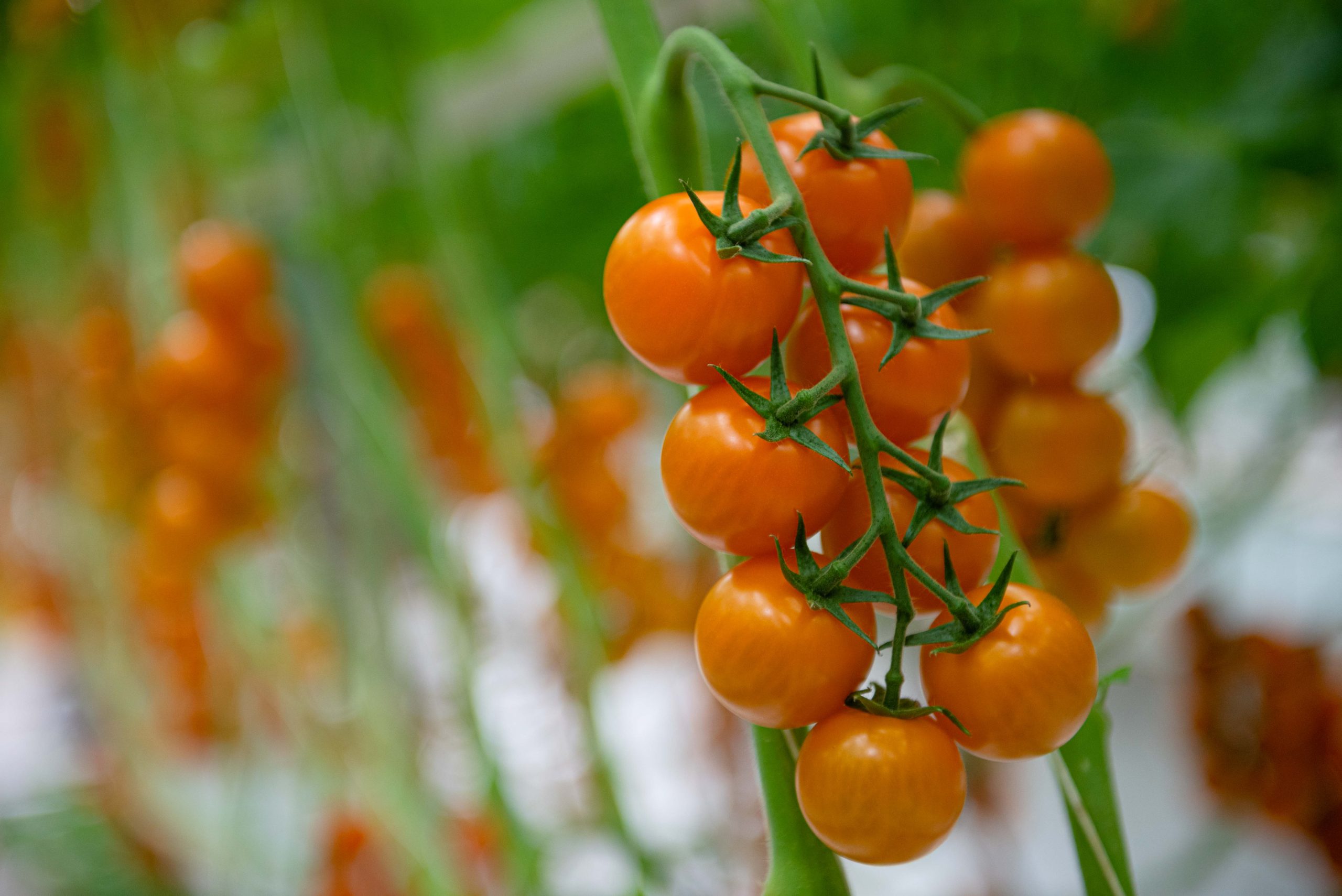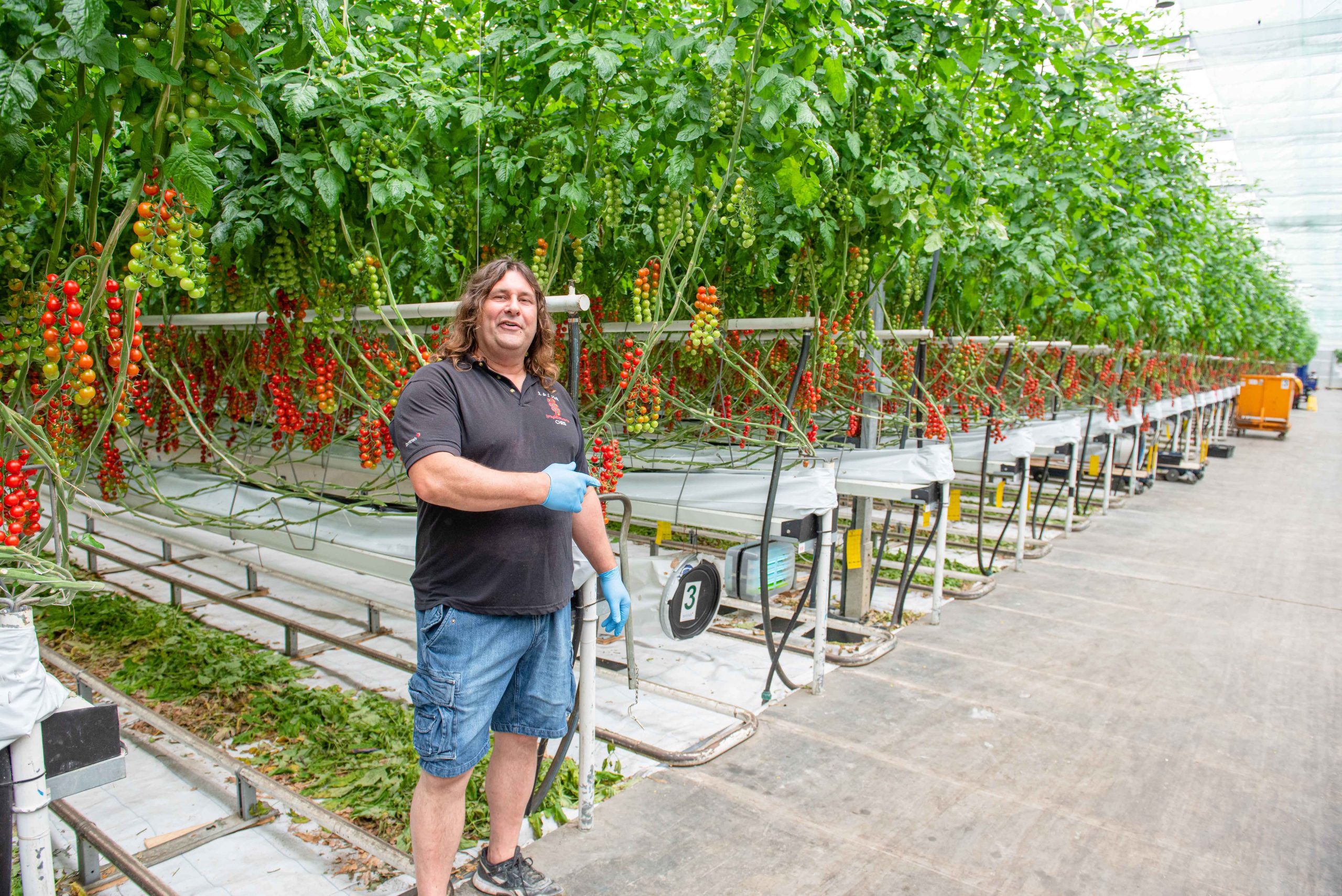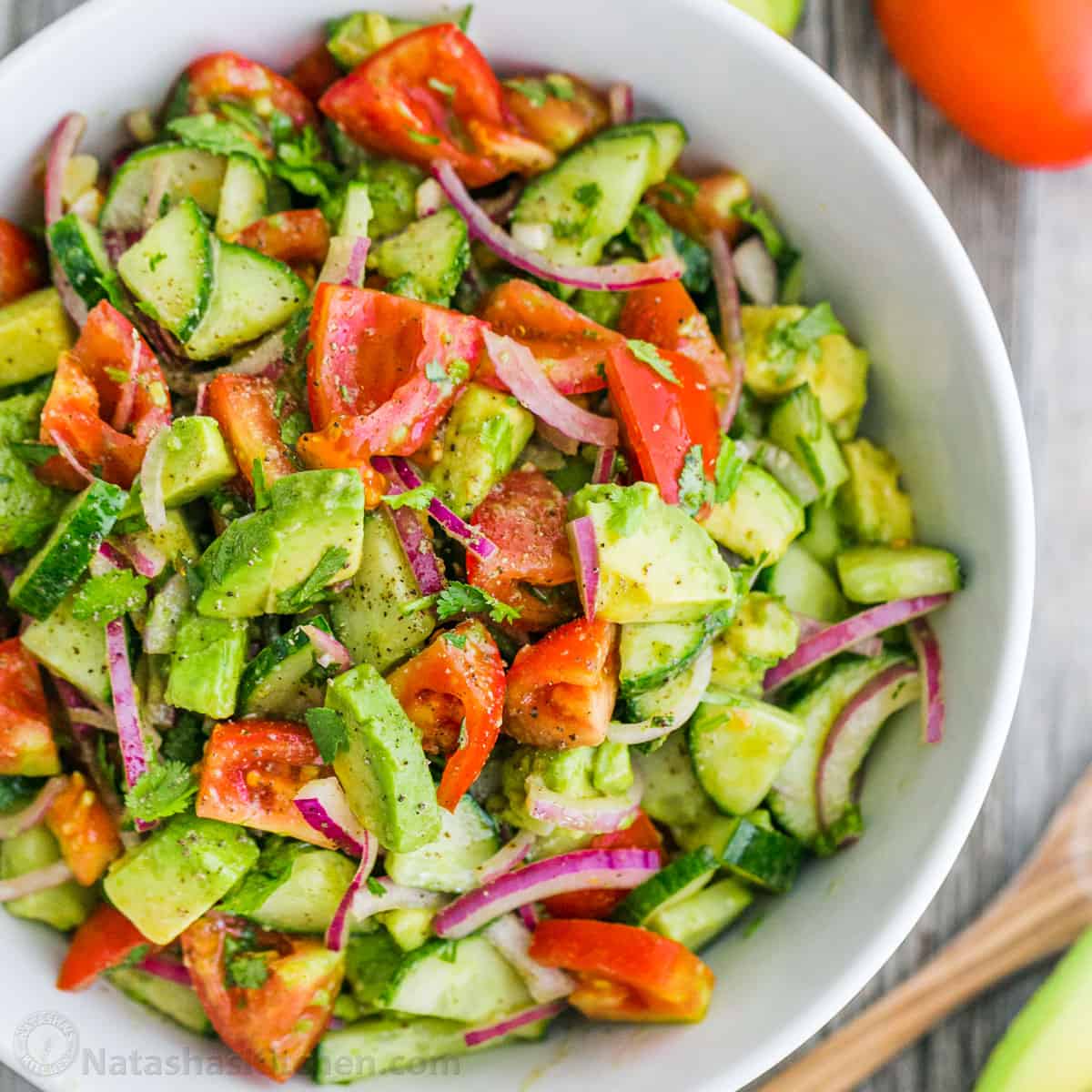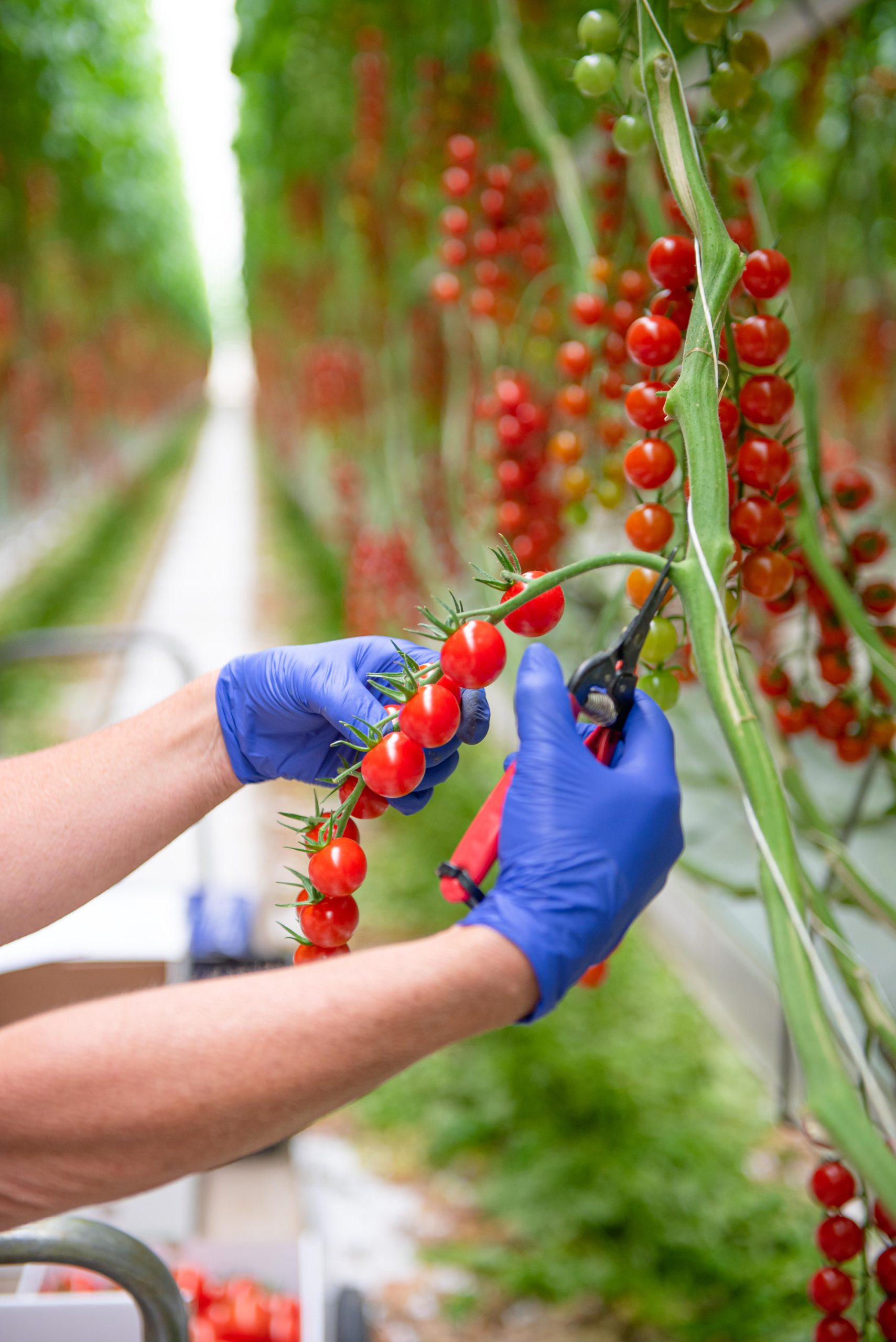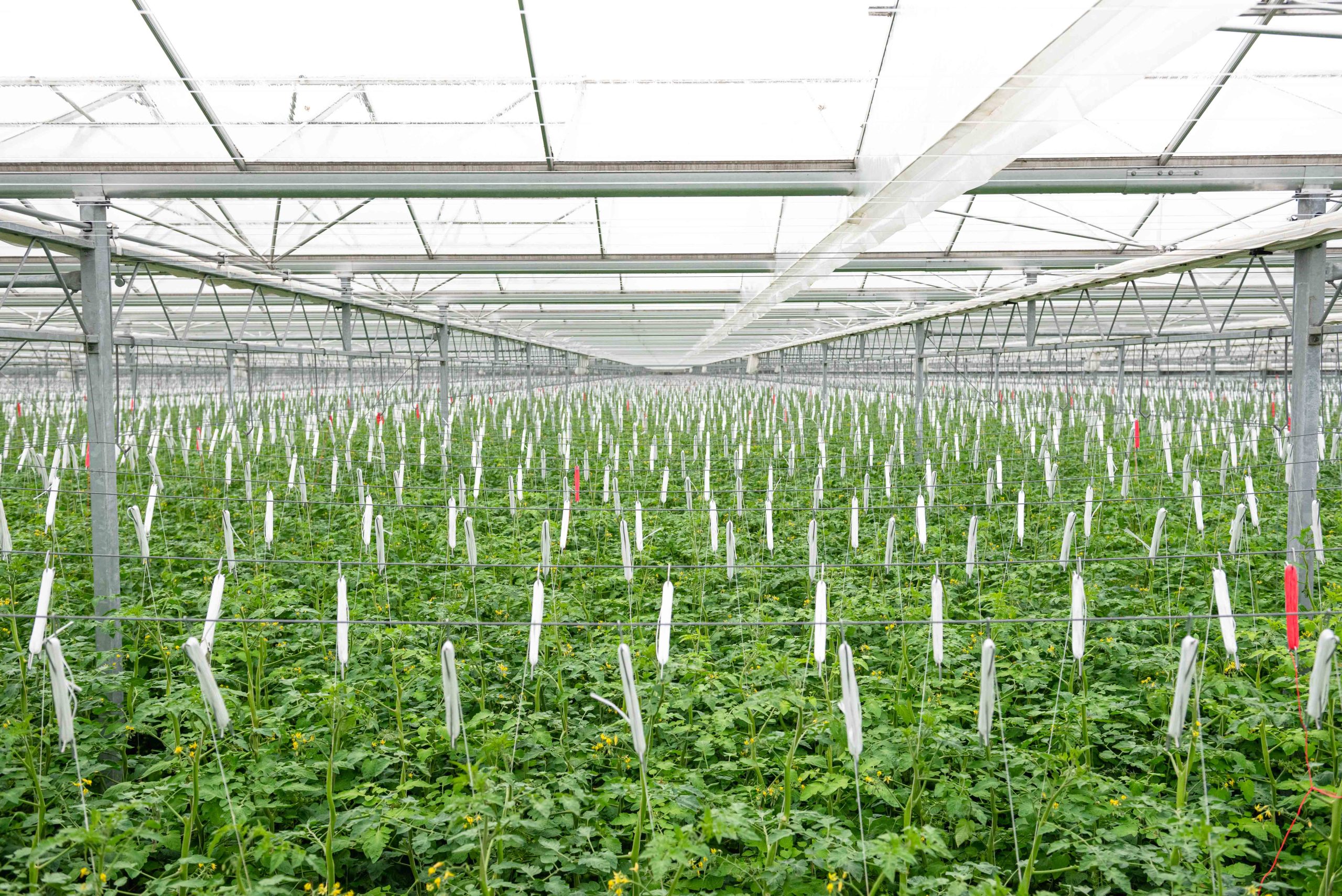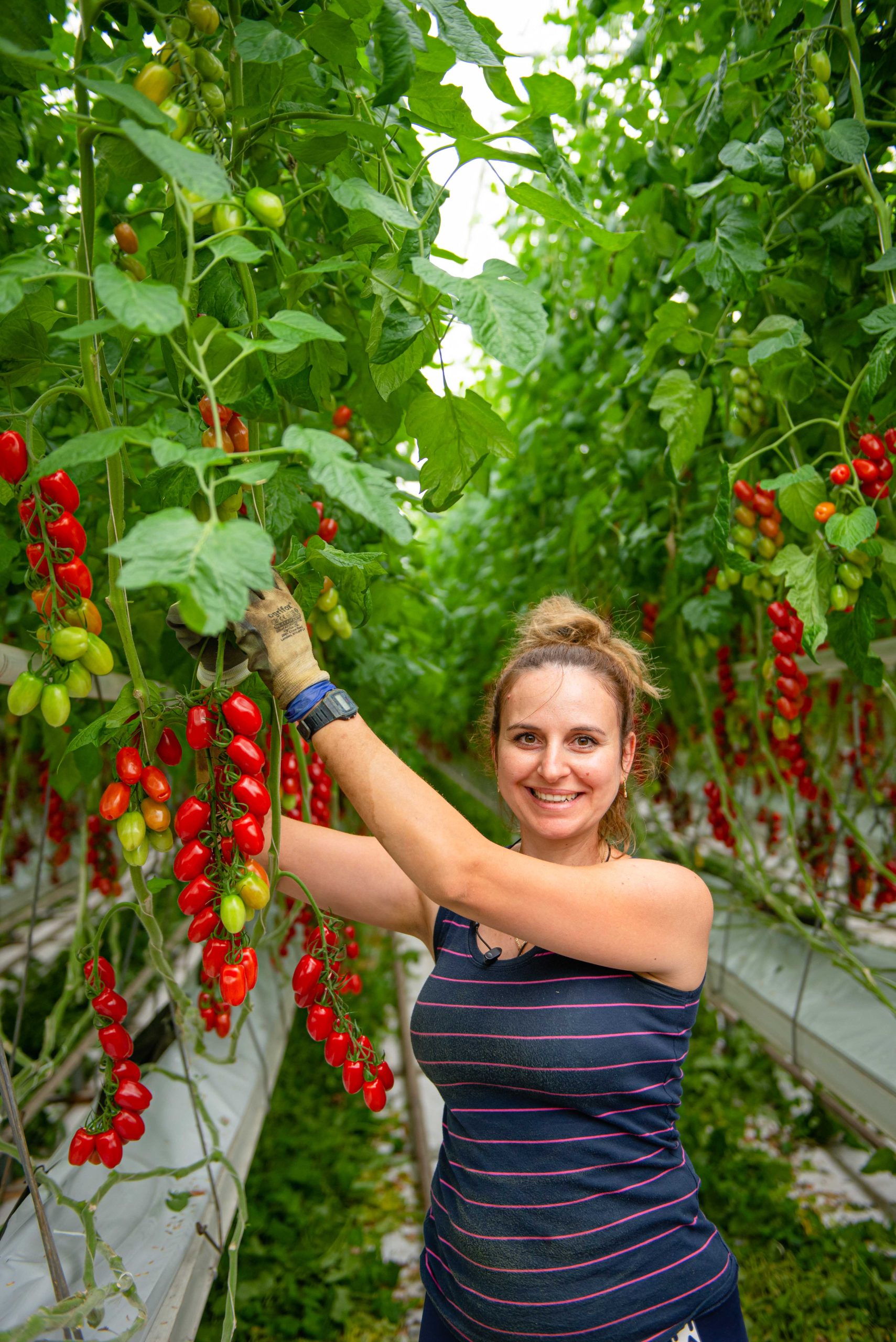As we progress through British Tomato Fortnight 2024, it’s time to carry on celebrating one of the nation’s most beloved produce!
This annual event shines a spotlight on the vibrant, juicy tomatoes grown right here in the UK. From enhancing our meals to supporting local agriculture, British Tomato Fortnight offers numerous reasons to appreciate this versatile fruit
- Fresh and Flavourful Local Produce:
British Tomato Fortnight is the perfect opportunity to savour the exceptional taste and quality of locally grown tomatoes. Unlike imported tomatoes, which may travel long distances before reaching our shelves, British tomatoes are harvested at their peak ripeness and can be enjoyed much sooner after picking. This means they are fresher, juicier, and packed with more nutrients. The wide variety of British tomatoes available – from sweet cherry tomatoes to meaty beefsteaks – ensures there’s a perfect option for every dish. By choosing British tomatoes, we can enjoy the best flavours while supporting local farmers and reducing our carbon footprint.
- Promoting Sustainable and Eco-Friendly Practices:
The British tomato industry is committed to sustainable farming practices that prioritise environmental health and resource efficiency. Many British tomato growers use advanced greenhouse technology, which allows for precise control over growing conditions, leading to reduced water usage and minimal pesticide application. Additionally, local tomato production means fewer food miles, cutting down on the carbon emissions associated with transportation. By celebrating and supporting British Tomato Fortnight, we can encourage these eco-friendly practices and contribute to a more sustainable food system.
- Strengthening Community and Local Economy:
British Tomato Fortnight is not just about enjoying delicious tomatoes; it’s also about fostering a sense of community and supporting the local economy. When we purchase British tomatoes, we help sustain the livelihoods of local farmers and workers involved in the tomato supply chain. This event also offers a chance for communities to come together through farmers’ markets, food festivals, and cooking demonstrations that showcase the versatility of British tomatoes. By participating in these activities, we can build stronger connections with our food sources and appreciate the hard work that goes into bringing fresh produce to our tables.
So, let’s make the most of this fortnight by incorporating more British tomatoes into our meals and participating in events that highlight the importance of supporting local produce. Happy British Tomato Fortnight!

